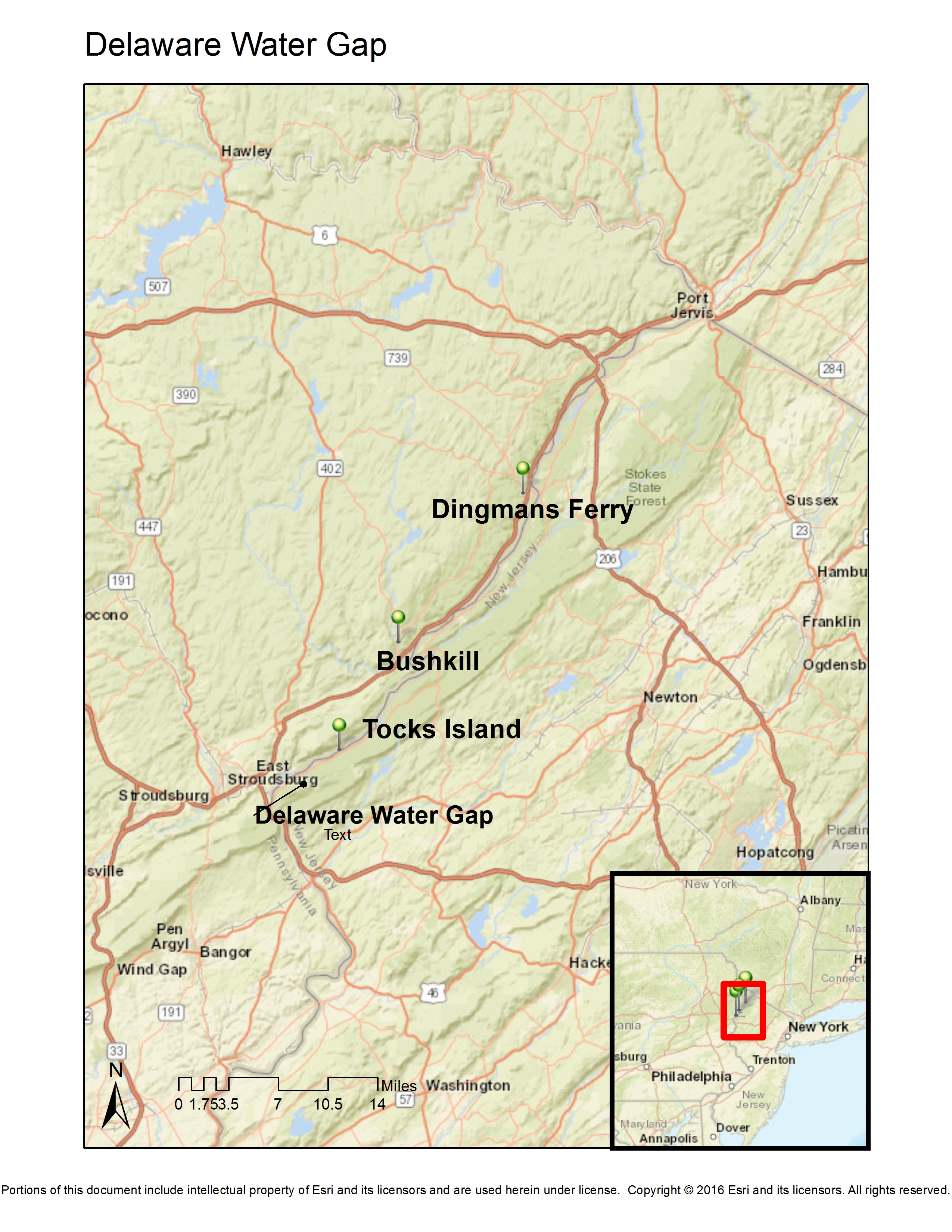Delaware Water Gap
The Evolving Justifications for Eminent Domain: Dam Inundation Stopped, Recreational Area Created, Properties Still Taken
What kind of country is this where people can be told, "Sorry, you have to get out of your home? Get out?" That’s not democracy. That’s not freedom.
- Hedda Matheson, displaced homeowner
What today is the Delaware Water Gap National Recreation Area started as a major public works project to create a 37 mile-long lake along the Delaware River a few miles northeast of Stroudsburg, Pennsylvania. The current-day Recreation Area stretches along the border of Pennsylvania and New Jersey where the Delaware River cuts through the Pocono Mountains. If the dam had been built on the Delaware River at Tocks Island in the 1960s as proposed, it would have produced a lake extending from close to present-day Interstate 80 at Stroudsburg northeast to Interstate 84 near Port Jervis, New Jersey.
Although the dam was never built, the 72,000 acres of land that was condemned, purchased, or taken by the federal government through eminent domain.[1] Although the original justification for taking lands through eminent domain (building the dam) was stopped, the taken land was not returned to original owners. Rather, in response to pressure from elected officials and an emerging environmental movement, the project was redefined. The public good of flood control, hydroelectric power production, water supply, and a recreational lake was changed to the public good of preserving the environment for millions of visitors to enjoy.

There were several arguments in support of building the Tocks Island Dam. It would have provided hydro-electric power as well as a water supply to the Pennsylvania, New York, and New Jersey region. More importantly, it was also seen as having a potential flood control function. In 1955 back-to-back August hurricanes resulted in historic floods on the east coast, with particular negative impacts on cities along the Delaware River. In those floods cities including Easton, Pennsylvania and Burlington, New Jersey (just north of Philadelphia), over 2,000 residences and 350 commercial and industrial properties damaged. Although the dam had already been discussed prior to 1955, the devastating floods created greater urgency for some form of flood control.

Source: Google Earth

Today, the National Park Service paints a peaceful picture of the Delaware Water Gap National Recreation Area on its web site. It boasts of 40 scenic miles of river, 67,000 acres of “forested mountains, riverine valleys, and fertile floodplains” along with more than 100 miles of hiking trails, including a 27 mile stretch of the Appalachian Trail. However this belies the decades-long controversies and displacement of residents that took place. While the proposed dam project eventually evolved into a project which created a “national recreation area,” displaced homeowners and landowners saw this as governmental sleight of hand and a dishonest taking through the eminent domain process. During the political and legal twists and turns, residents also felt that it was larger economic interests and powerful political interests that called the shots, not every-day citizens.
[1] In the context of eminent domain the word “taken” has legal usage pointing back to the Fifth Amendment of the U.S. Constitution. The clause in the Fifth Amendment, known as the “Takings Clause,” states the “private property [shall not] be taken for public use, without just compensation.” The Fourteenth Amendment limiting the power of states further declares “nor shall any State deprive any person of life, liberty, or property, without due process of law;….” Bill Funk, “CPR Perspective: The Takings Clause of the Fifth Amendment,” Center for Progressive Reform Website. http://www.progressivereform.org/persptakings.cfm. Accessed March 2, 2016; and FindLaw for Legal Professionals, “U.S. Constitution Amendments,” Website. http://constitution.findlaw.com/amendments.html. Accessed March 2, 2016.

